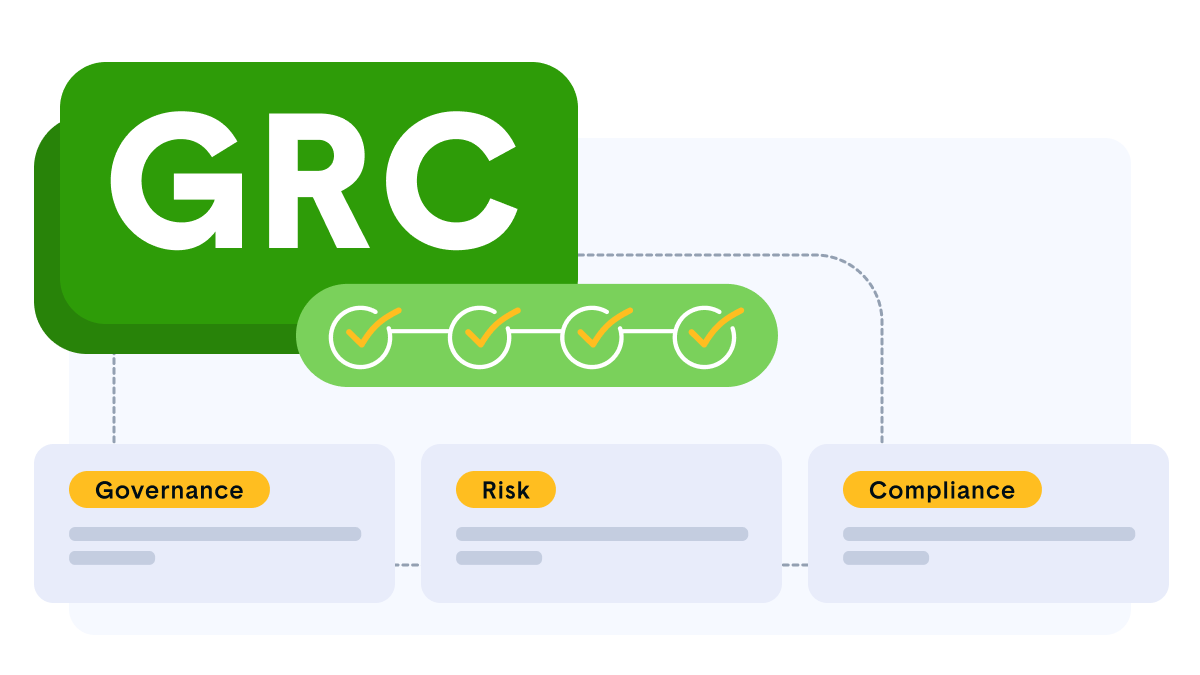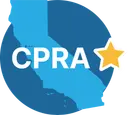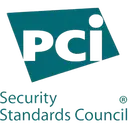Imagine you’re in the thick of an audit. Your team is scrambling across multiple platforms to gather evidence. You just discovered that a former employee still has access to three compliance tools, and your CFO is questioning why you’re paying for five different risk management solutions.
Somewhere in that chaos, you realize that your state-of-the-art compliance tech stack—the one that was supposed to make everything easier—has become your biggest operational nightmare.
If this scenario feels uncomfortably familiar, you’re not alone.
Across the enterprise landscape, well-meaning attempts to strengthen compliance programs have led to an ironic outcome: the tech meant to simplify compliance has become unmanageable.
This fragmentation creates an “audit gap” where critical evidence falls through the cracks, duplicate work burns out your best people, and escalating costs deliver diminishing returns.
“Vendor sprawl is a known risk, and companies are looking for ways to consolidate their compliance programs and IT governance in the best way possible,” says Matt Udicious, Director of InfoSec Assurance at Thoropass.
But for many organizations, consolidation is much easier said than done.
Here, we explore how well-intentioned compliance tech investments can inadvertently create more chaos—and why consolidation may be the key to closing the audit gap.
Multiple tools and vendors add complexity while stifling transparency and interoperability
The modern compliance stack at most upmarket companies tells a story of incremental additions rather than strategic planning.
“A lot of enterprise and upmarket customers are on more legacy tools and more complex tools than what exists in the startup compliance space. They might have one tool for risks entirely; they might have another tool for access control entirely; they might have another tool for logging and monitoring, and one for issue management, and none of that is really centralized.” – Matt Udicious, Director InfoSec Assurance, Thoropass
This fragmentation creates significant operational challenges. When tools don’t communicate effectively with one another, teams must find ways to manually bridge the gaps.
Data that should flow seamlessly from compliance preparation to audit execution instead requires manual extraction, transformation, and re-entry across multiple platforms. Each handoff represents a potential point of failure where critical information might be lost, misinterpreted, or simply overlooked.
The burden extends beyond data management to user proficiency. Each tool in the stack requires its own training, its own workflows, and its own expertise.
As a result, audit evidence collection that should take hours can stretch into days as teams move between platforms like Archer, ServiceNow, and Jira, extracting data from each and attempting to create a coherent narrative for auditors.
Without a unified view of this data, identifying gaps or inconsistencies becomes a manual detective exercise rather than an automated insight.
Vendor sprawl duplicates onboarding, maintenance, and other management tasks
The hidden cost of vendor sprawl reveals itself most clearly in the duplicated effort required to maintain multiple relationships and systems. What might seem like a straightforward decision to add “just one more tool” to address a specific need can quickly unravel into a complex web of ongoing management obligations—all of which drain IT resources and create new security vulnerabilities.
“If your tech stack and tooling are built across multiple vendors, there are a few lenses to that in terms of closing the audit gap,” Udicious explains. “You’re consistently required to maintain your security maintenance review and third-party management of all those vendors. You might be using a lot of vendors for different functions that could be consolidated. Because of that, annually or quarterly, you’re reviewing those vendors to confirm that there were no data breaches, and that none of your data with those vendors is at risk.”
This vendor management overhead compounds with each addition to the stack. Teams must track different renewal cycles, negotiate separate contracts, manage distinct support relationships, and ensure each vendor maintains appropriate security certifications. The administrative burden alone can consume significant portions of the compliance team’s bandwidth.
Access management presents another layer of complexity. “If you’re a larger organization and you have these various tools, you’re then provisioning access across multiple tools,” Udicious points out.
This creates a cascade of access management obligations—reviewing permissions, removing access when needed, and treating each vendor tool like a company asset requiring constant oversight.
A single oversight in deprovisioning could mean former employees retain access to critical systems after leaving the organization, creating significant security vulnerabilities.
The security risks from poor access management are troubling enough, but the implications for your audit process are equally severe. When auditors arrive expecting clear, organized evidence of your compliance controls, what they find instead is a scavenger hunt across disparate systems.
Rather than presenting auditors with a consolidated view of compliance evidence, teams must coordinate across multiple stakeholders and tools, turning what should be a straightforward evidence review into a complex orchestration exercise.
“You’re required to go into a different source for different data, probably for various audit requests,” notes Udicious. “Instead of jumping into a consolidated drive where you have all your audit evidence, you’re likely going into Jira for tickets and moving to a logging monitoring tool to evidence log configurations. Then you’re jumping into access control tools like Okta to evidence all the access controls and access reviews.”
This fragmentation not only slows down audits—it also increases the likelihood of gaps and inconsistencies that could lead to failed controls or findings.
When evidence lives across multiple systems, each with its own data formats and retention policies, maintaining a complete and consistent audit trail becomes exponentially more difficult.
High operational overhead increases financial and other resource costs
More tools = more money and resources. Here are a few consequences that can occur within an enterprise organization due to excessive tech and vendor sprawl:
1. Overlapping functionality eats away at your budget
The true cost of compliance tech sprawl extends far beyond software licensing fees (though these fees alone can be staggering when multiplied across dozens of vendors).
Organizations find themselves paying for overlapping functionality across multiple platforms, essentially purchasing the same capabilities multiple times.
Budget planning becomes increasingly complex as teams must track and justify spending across numerous vendors, each with their own pricing models, escalation clauses, and renewal terms.
2. Managing multiple tools creates a team-wide burden
When compliance requirements change or new frameworks need to be adopted, organizations with sprawling tech stacks find themselves unable to adapt quickly.
Each tool might need separate configuration changes, updates, or even replacements to meet new requirements, turning what should be strategic compliance decisions into lengthy technical implementation projects.
3. Constant tool-switching can result in employee frustration
When team members spend the majority of their time on tool management rather than strategic compliance work, the negative impact can be significant.
The frustration of navigating between systems, dealing with different interfaces, and reconciling conflicting data erodes morale and contributes to burnout.
“When you’re thinking about changing tools [or adding more], you’re changing operations, people’s responsibilities, and fundamental processes for overseeing compliance and gathering audit evidence at your organization,” Udicious observes.
The resistance to change often stems not from a reluctance to improve but from the pain of untangling existing tool dependencies.
Consolidation leads to simplification and strategic positioning
Smart organizations are beginning to recognize the opportunity for both cost reduction and efficiency gains through consolidation. “When you’re looking at consolidation of your tools, you can think about it from the lens of what tasks you could also potentially automate,” Udicious suggests.
Consolidation redirects your team’s time to strategic work, which significantly shrinks both team maintenance and operational costs.
The contrast between legacy approaches and modern consolidated platforms is stark. Traditional tools rely heavily on manual processes—from importing data to tracking compliance tasks—creating endless opportunities for human error and oversight.
“In modern compliance platforms, there’s extensive capability to set up workflows and automations,” notes Udicious.
These platforms can automatically trigger access reviews on scheduled cycles, alert teams when security certificates are approaching expiration, flag when a control hasn’t been tested within its required timeframe, or notify stakeholders when a configuration drifts from approved baselines. What once required spreadsheets, calendar reminders, and constant manual checking now happens automatically in the background.
This automation advantage extends to real-time monitoring and alerting. Without consolidation, organizations often rely on separate logging and monitoring tools managed by dedicated teams, creating yet another silo where critical security insights remain isolated from the broader compliance picture.
Modern consolidated platforms can provide immediate visibility into compliance gaps, flagging issues like unencrypted databases or configuration drift as they occur.
Closing the audit gap within your organization
The organizations with the strongest security postures aren’t the ones with the most compliance tools—they’re the ones who recognize that true compliance maturity means doing more with less. They’ve realized that the old “survive the audit” mentality perpetuated by tool sprawl is holding them back from using compliance as a competitive advantage.
Thoropass offers true consolidation of both compliance automation software and cybersecurity assurance services. It’s not about adding another tool to your stack. Rather, it’s about using tech that enables you to work smarter and scale as business demands.
Schedule a discovery session with Thoropass today and find out what your compliance program could look like without the sprawl.

Related Posts
Stay connected
Subscribe to receive new blog articles and updates from Thoropass in your inbox.
Want to join our team?
Help Thoropass ensure that compliance never gets in the way of innovation.













.png)